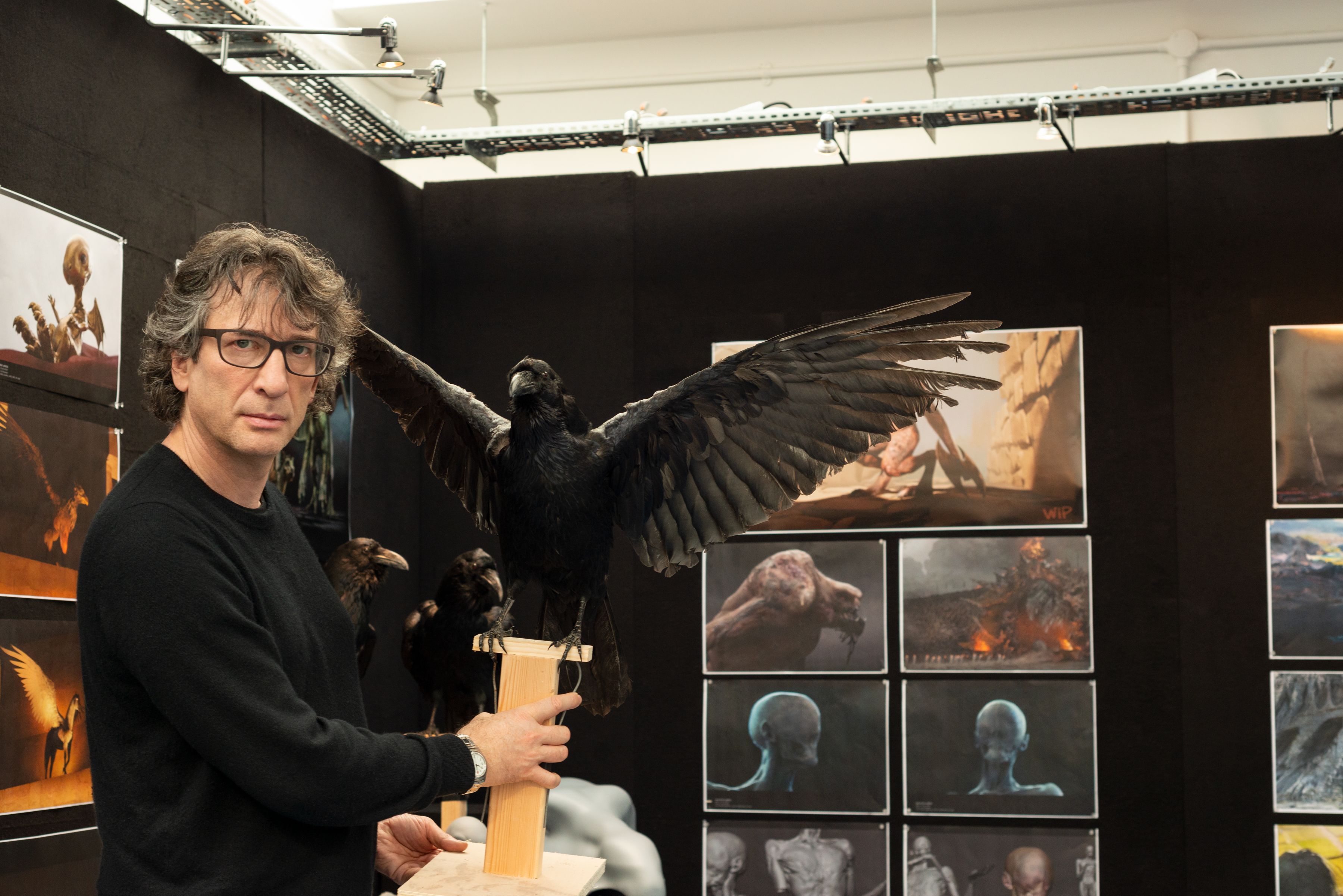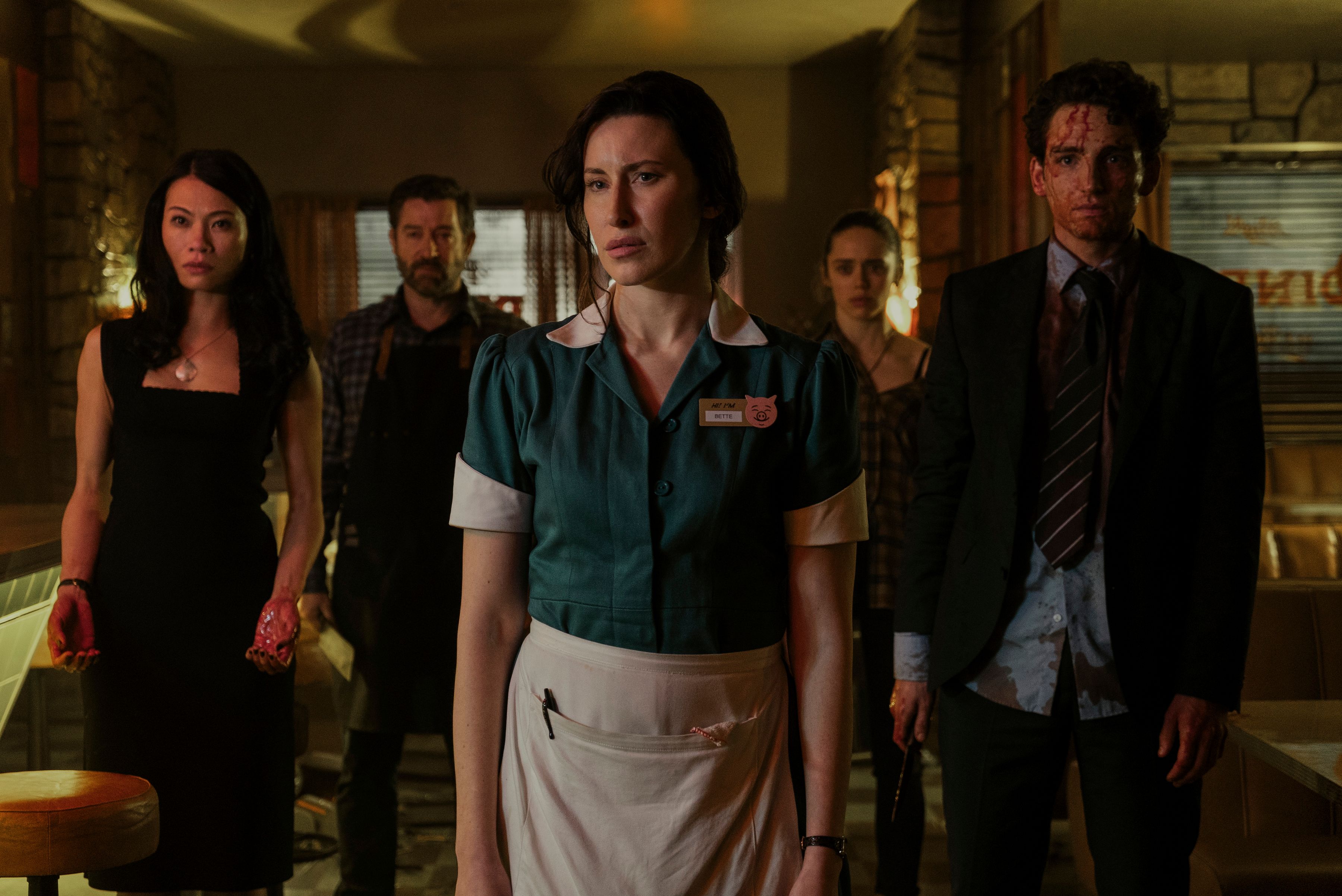

Not like the books?
How Netflix’s Sandman takes on gatekeeper fandom and hits a “home run”

Faculty researcher and comics expert Joe Sutliff Sanders discusses his early passion for Neil Gaiman’s The Sandman, and how Netflix’s new adaptation challenges ideas about who ‘owns’ comics and culture.

Joe Sutliff Sanders is an Associate Professor in the Centre for Research in Children’s Literature, University of Cambridge, where his expertise includes fantasy, science fiction, comics and graphic novels. In 1989, as a 16-year-old comics obsessive, he purchased Neil Gaiman’s The Sandman, which had just come out, even though he knew nothing about it. This acclaimed DC Comics series about Morpheus, maker of dreams, has recently been turned into a hit TV show.
Here, Joe explains how The Sandman helped to transform the young adult literature scene, and why Netflix’s new adaptation maintains Gaiman’s ambition to ensure that comics – and the stories they tell – belong to everyone.
In 1989, I purchased a copy of The Sandman without knowing a thing about it.
I was 16 and had gone to Philadelphia, where there was a comic book shop which had a much better selection than the one in my home town in North Carolina. The first issue of The Sandman had just come out and I bought it off the shelf, out of little more than pure curiosity.
I tended to seek out comics based on who was writing them. What usually drove the value of a comic in those days was who the illustrator was and the characters in it. I was interested in the authors, and I had seen some interesting-looking advertisements for another book, Black Orchid, which was also by Neil Gaiman and the cover artist, Dave McKean. I thought The Sandman might be worth reading because it was by the same guys.

Joe Sutliff Sanders. Photo: Anastasia Ulanowicz
Joe Sutliff Sanders. Photo: Anastasia Ulanowicz
Many people were drawn to how gritty, bleak and violent these comics were. Gaiman realised that it wasn’t the blood and violence that worked, but the deep, psychological characterisation and flexible storytelling.

At the time, I was both a good comics fan – and the worst possible kind.
I was reading comics before I could actually read. What I mean by that is that before I could take letters, make them into words, and make words into sentences, I would have comics out on the floor and infer a story from the different images.
Part of the original appeal for me was the clear sense of right and wrong in the stories. I also started on ‘Silver Age’ comics, with characters like The Flash; the hallmark of these is that they tend to define a set of ‘rules’ around the characters’ powers which can then be extrapolated in different directions. I loved the idea that there were rules that could then be used to explore the unexpected.
By 1989, I was one of those fans who loved navel-gazing conversations about subjects like what shape Wolverine’s claws are (an actual point of contention for X-Men fans). I was also a ‘speculator’. Speculators realised that some comics became really valuable. They started treating them as commodities: bulk-buying comics that might acquire value. This wound up influencing the market in really stupid directions: companies made artistic decisions based on whether they thought speculators would buy lots of comics, which stifled more interesting artistic directions for the industry and created bloat that eventually left many local comics shops in bankruptcy. Speculators really messed up comics, and I was part of that problem.
I was also a ‘good’ comics fan, however. I wanted more diverse characters, stronger female characters: I would go out of my way to read, support and demand stories with that kind of content. The Sandman would turn out to be a game-changer in that sense – and others.
The Sandman challenged multiple presumptions about what comics could and should do.
Just before it came out, everything had been stood on its head by the work of writers like Alan Moore, who wrote Watchmen and The Killing Joke. Many people were drawn to how gritty, bleak and violent these comics were. Gaiman realised that it wasn’t the blood and violence that worked, but the deep, psychological characterisation and flexible storytelling. The Sandman was created with that in mind. He could tell any story he wanted, in any genre, place or time, because whatever happened, Morpheus (“Dream”) was there.
One of the big problems at the time was that comics shops were very male, unfriendly spaces: they were unwelcoming for women, queer people, or people of colour. They deserved the reputation they had. That caricature of comic books stores in The Simpsons is barely a caricature at all – it’s more a photograph of what they were like.
The Sandman actively invited women into that space. For example, Neil deliberately avoided using pronouns for Death, a female character, until she finally appears in Issue 8. This was a deliberate challenge to the audience. He has talked about how he actually received fan mail saying things like “Really looking forward to meeting Morpheus’ brother, Death”, and would think, “Gotcha”.
Years later, I was asked to write an academic article about Sandman and I spoke to different comic store owners for my research. Every one of them said that this was the book that finally got women into their shops. There’s lots of evidence for that; there’s also been wider academic writing about its importance in feminist culture.
The new series deliberately veers away from being a ‘faithful’ adaptation with that same inclusive philosophy in mind.
One approach to making a TV adaptation is to make it as faithful as possible. This appeals to the sense of authority felt by audience members who have read the original version. It feels good – almost flattering – to be someone who can say, “I know about this, I read the original”.
I think it’s important that Netflix’s The Sandman, which of course Gaiman helped to create, didn’t play to that rather smug authority that comes with knowing something others don’t. I say that as someone to whom that would definitely have appealed – in fact, I would have been the smuggest of them all!
But Gaiman’s point is that nobody has any authority when it comes to The Sandman and he’s deliberately undermining any sense of ownership. He’s notorious for disliking the ‘speculator’ trend in comics culture and that whole gatekeeping thing that comes with being someone “in the know”. He’s also made this point about gatekeeping on Twitter. His view is that the different versions are The Sandman all count, and they belong to everyone.

The Corinthian is, first and foremost, fucking terrifying.

The new show does a superb job of retaining the heart of the originals while changing to take advantage of what the new medium can do.
The show had to be different from the originals if it was going to succeed. Comics in the 80s were made to be read, reread, and meditated upon because fans only got a new chapter every few weeks. Nobody is going to switch on Netflix, watch episode one every few days for a month, and only then start looking at episode two. It’s a different kind of experience.
As a result, the makers of The Sandman have done a number of things differently and – although it pains me to say this – some of them are probably better than the original. The Corinthian is a great character, for example, but he doesn’t matter much in the comics. When I saw the ads, I feared we were getting a Lex Luthor version of The Corinthian, a supervillain the hero repeatedly battles until a do-or-die fight in the final episode. In fact, they worked with what the Corinthian already is: a charming, conscience-less serial killer. First and foremost, that’s fucking terrifying. Second, the great thing about him is that he’s so much weaker than Morpheus, which makes him automatically much more sympathetic than a serial killer should be.
There are multiple places where they’ve figured out how to combine parts of the story to tell it more efficiently – something which TV is usually bad at. The ‘diner scene’, for example, is from the first great issue in the original series, but the reason it works in the comics is because and one of the strengths of the comic-book version is that it invokes a compact form of storytelling that can only really be achieved in comics. I thought the TV version was going to be an absolute travesty, but instead of trying to replicate the structure of the original, which, again, was written to make the most of what comics are good at, they overhauled it. They seem to have asked themselves, what do we need to get out of this emotionally, in terms of story advancement and character development, but in a way that fits with television? Their solution was to turn it into a stage play. That works brilliantly on TV. It’s an absolute home run.

We should study this work in the same way we would study any good literature.
Back when I was a student, one of my professors told me that the only useful definition of great literature is that it is literature that spawns great conversations.
I don’t know if that’s the best definition going, but there’s no question that The Sandman has fulfilled that role, and is doing so again now. For thoughtful readers (and viewers) of literature, as anyone else, the medium is not what determines whether something is worth consuming or not. It’s what the creators have managed to do with the medium that matters.
Images in this story courtesy Of Netflix © 2022 except where otherwise stated (captions, from top):
Tom Sturridge as Dream in episode 1/10 of The Sandman.
Promotional art from the series.
The Sandman. Writer Neil Gaiman on the set of The Sandman (Cr. Ekua King/Netflix © 2022).
Kirby Howell-Baptiste as Death, Tom Sturridge as Dream, John Leader as Freddie in episode 1/06 of The Sandman.
Boyd Holbrook as The Corinthian in episode 1/01 of The Sandman.
(L to R) Lourdes Faberes as Kate Fletcher, Steven Brand as Marsh Janowski, Emma Duncan as Bette Munroe, Daisy Head as Judy Talbot, Laurie Davidson as Mark Brewer in episode 1/05 of The Sandman. (Cr. Liam Daniel/Netflix © 2022).